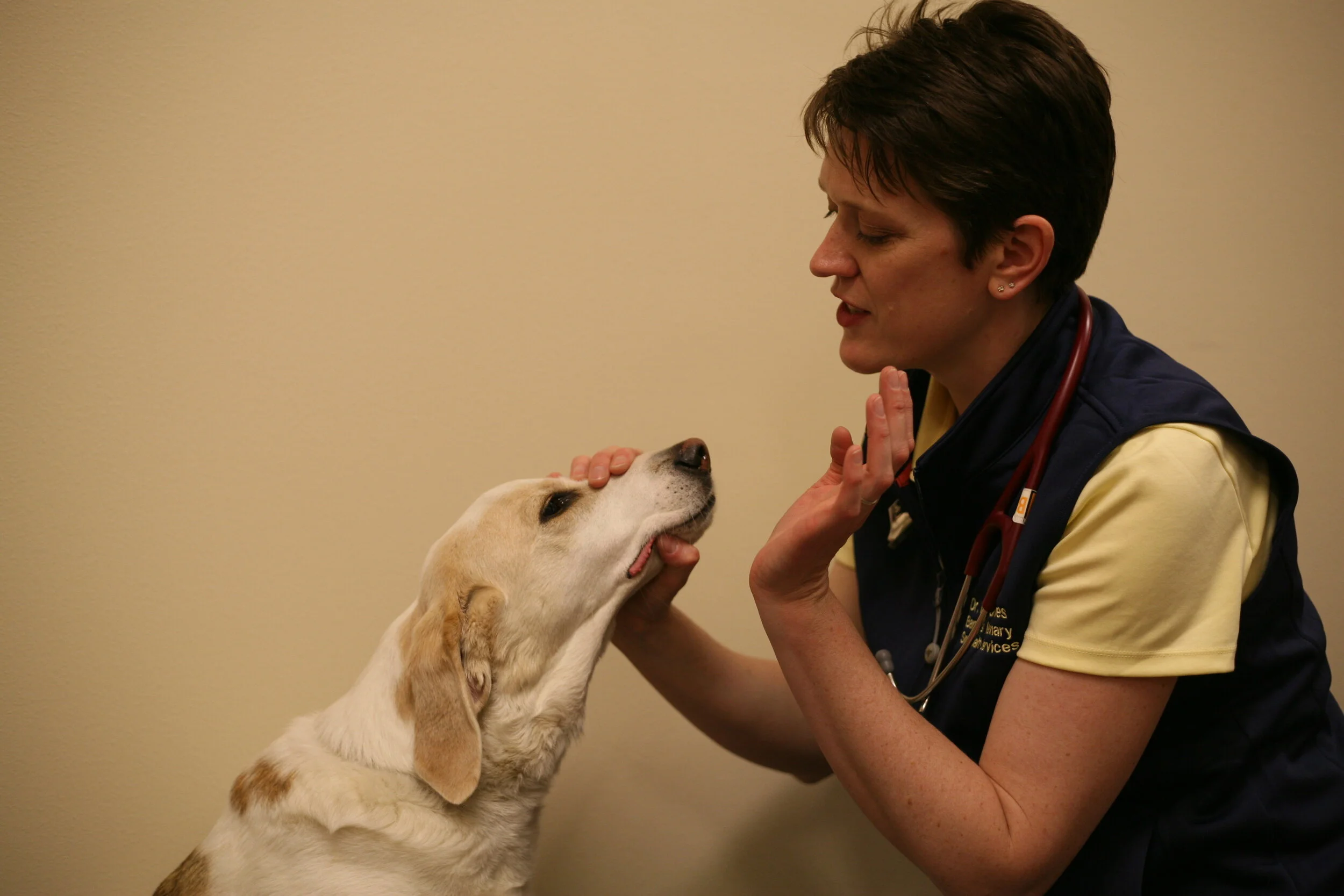The Missing Menace
Although I'd be grateful if you called me when you found a missing menace response, I realize that isn't an option for some of you or for all clients, all the time. So, let's dig in and get to the bottom of the menace response together.
Anatomy First
The menace response is a learned response. That means it isn't consistent in puppies and kittens until about 16 weeks. Animals must learn that something coming at their eye is worth blinking for.
Input: Cranial nerve 2
Where does it go? Prosencephalon (that's the thalamus and cerebrum)
Who is in charge of output? Cranial nerve 7.
Simply put, if a menace response is missing the problem involves cranial nerve 2, prosencephalon or cranial nerve 7.
How can you differentiate between deficits of the cranial nerves and prosencephalon?
Simple! The rest of the neurologic exam. (Wait..don't stop reading yet! It's really not bad!)
Let's take cranial nerve 2 first. Menace AND the pupillary light reflex (PLR) both involve cranial nerve two for input, but they have different outputs. Menace uses cranial nerve 7 for motor effect. PLR uses the parasympathetic part of cranial nerve 3 for it's motor output. So, if you have an deficit in menace and PLR, the lesion involves cranial nerve 2. If you have a deficit in only menace, but not PLR, the lesion cannot involve cranial nerve 2.
Now, let's take cranial nerve 7. Other than menace response, cranial nerve 7 is instrumental in the blink reflex. The blink reflex involves cranial nerves 5 (sensory) and 7 (motor). Let's play this game again. If the animal has a menace response deficit but does NOT have a blink reflex deficit, the lesion cannot involve cranial nerve 7. Conversely, if the animal has both a blink reflex deficit and a menace deficit, the lesion must be in cranial nerve 7.
That's only two extra neurologic assessments folks! We can totally spare the time for that, right?
Finally, if the animal has an absent menace response but intact PLR and blink reflex the lesion must be in the prosencephalon. Easy peasy!
Do you have a case with an interesting neurologic examination? Unsure where to go next? Call me! Telephone consults with veterinarians are FREE and, even better, you can sign up on my website for the a time slot that works for your schedule. No more telephone tag! No more waiting for specialists to call back. (At least not this one.)
Have a terrific week! Stay safe out there, my friends.

